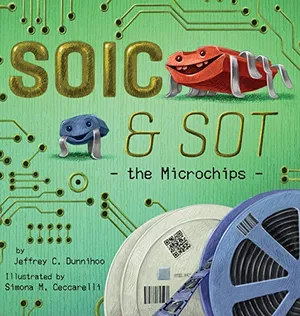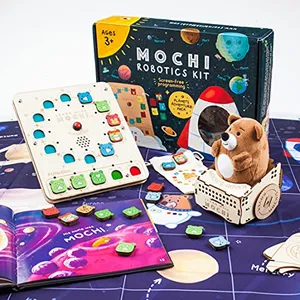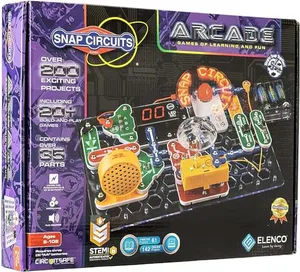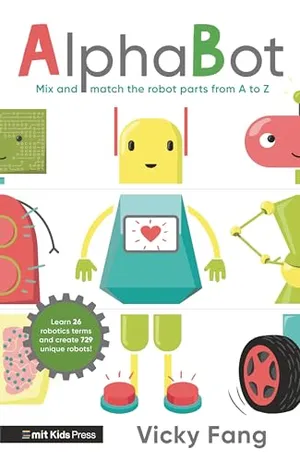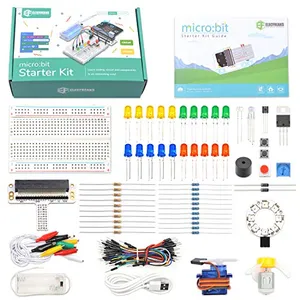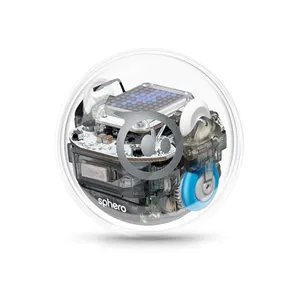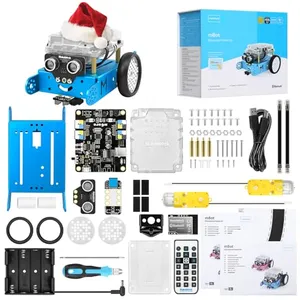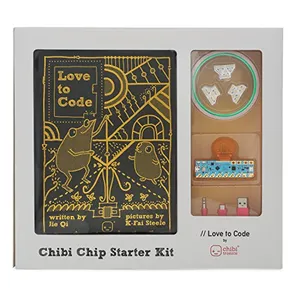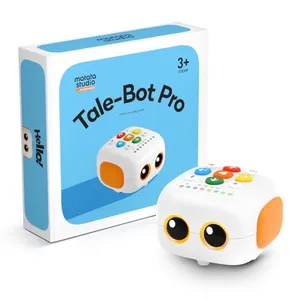Engineers Choose the Ten Best STEM Toys to Gift in 2024
Creative circuitry and rolling robots make up this year’s top toys for teaching kids to love science, technology, engineering and math
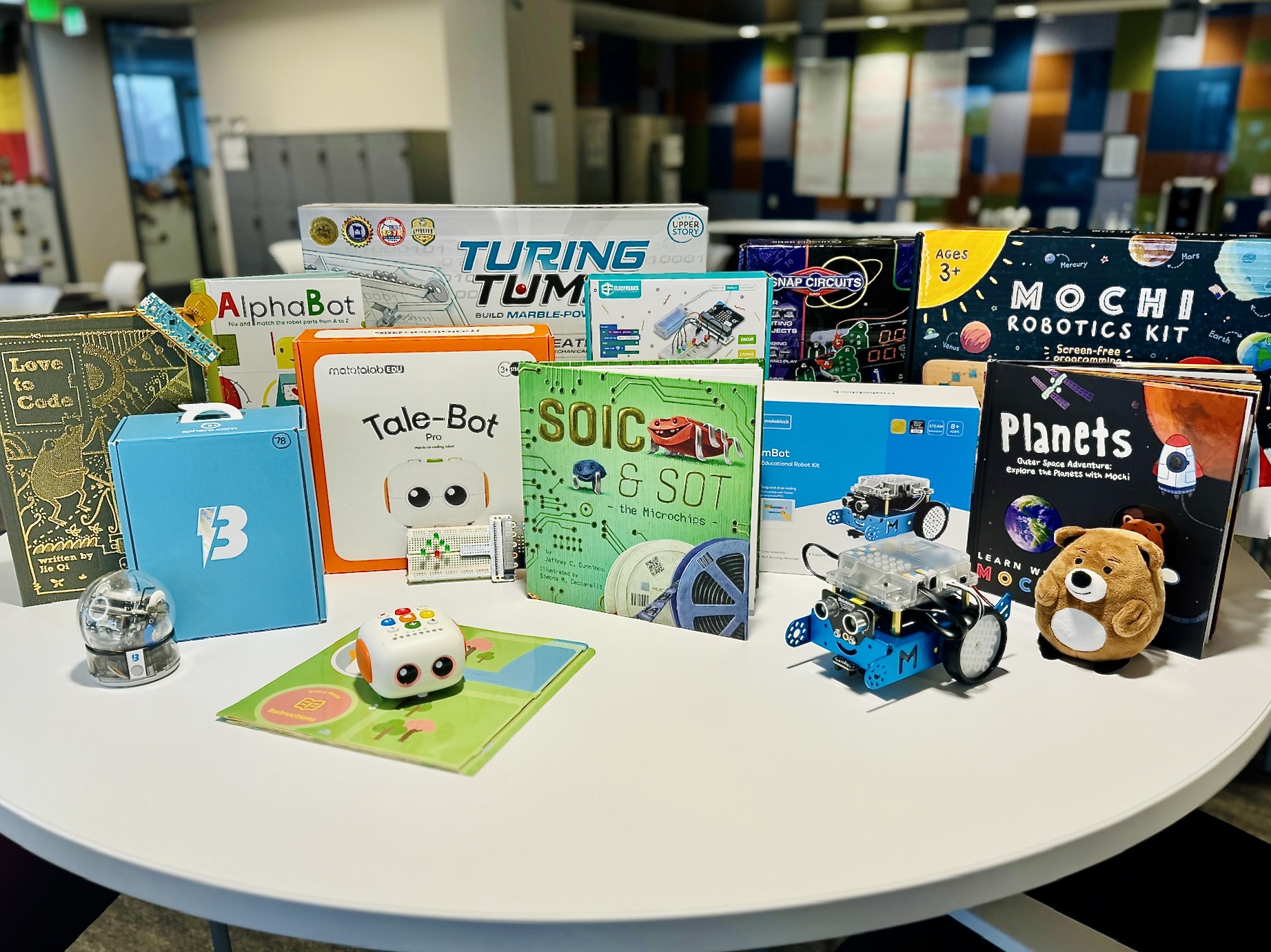
Each holiday season, adults face an avalanche of gift options for the children in their lives. Finding toys that are not only fun but also educational can be a challenge.
For over a decade, Purdue University’s Inspire Research Institute for Pre-College Engineering has assembled an expert-reviewed list of toys that develop skills in science, technology, engineering and math. This year’s gift guide focuses on microelectronics, the tiny circuits and chips that make modern life possible.
With 26 years of experience as a teacher, Jennifer Heap led the team testing and selecting the toys for the guide. Heap is the project manager at Purdue University’s SCALE K-12 program, which works directly with school districts to develop curriculums that integrate microelectronics across all subjects and prepare students for careers in defense-related microelectronics.
“As a former teacher, I was consistently asked each year by parents, ‘What do you recommend for the holidays?’ or ‘What do you recommend for my child’s birthday?’” Heap says.
“So it was important to me to look at some of the toys and books that we use in the curriculum at SCALE K-12, and put some of those onto the gift guide,” she adds. “I knew if kids loved them in the classroom, they would want them at home as well. And parents would want something that teachers are using that they know is good and quality.”
Heap and her team of five reviewers combed through a long list of toys—a mix of tried-and-true favorites and new products from reputable companies—rating each based on what engineering competencies they strengthened. After the preliminary assessment, they met and discussed each toy, selecting their top 40 to include in the guide. In addition to the experts, kid-testers of all ages played with the toys and gave their feedback, which informed the final list.
Heap’s team picked ten favorites, which are reflective of the entire list, to share with us.
“We really looked at what each of our favorites were, and then wanted to make sure that the top ten list was reflective of different age levels, different price points, and that they hit all of the different categories, such as circuitry, robotics, coding, programming,” says Heap.
SOIC and SOT: The Microchips
Ages 4+
In this 2018 book, two microchips named SOIC and SOT embark on a quest to discover their purpose, journeying from a warehouse through an electronic assembly line and out into the world. SOIC and SOT: The Microchips is geared toward elementary school readers, teaching students the base knowledge of how microchips work. It’s a subject that author Jeffrey C. Dunnihoo should be well versed in—he’s an electrical engineer specializing in semiconductor and system development.
“No matter what grade I taught, picture books were so important,” says Heap. The book, also available in Spanish, is used in several SCALE K-12 units. “I introduced almost all of my lessons with picture books,” she says.” “It’s a great way to help kids get that basis and that foundation of whatever it is we’re teaching. It makes them want to know more about the topic.” (Pragma Media, $16.45)
SOIC and SOT: The Microchips
Two microchips named SOIC and SOT go on a journey through an electronics assembly line.
Mochi Robotics Kit
Ages 4-8
Mochi Robotics Kit is a hands-on way for early elementary learners to build coding skills through play. With the plush Mochi Bear and wooden rover, kids problem-solve their way through different challenges in the kit’s storybook, taking Mochi on adventures with coding blocks.
The kit keeps kids from 4 to 8 years old engaged without a screen. Before even getting into the coding challenges, users can trick out Mochi Bear’s Lego-compatible rover with bricks from home.
“I taught kindergarten for several years, and I think parents are really interested in looking for screen-free ways that are still educational, that will teach their kids about problem solving and build those critical thinking skills,” Heap says. (Learn with Mochi, $149)
Mochi Robot
With Mochi, kids learn the basics of computer programming in a playful, hands-on way as they explore STEM subjects through fun storybooks.
Snap Circuits Arcade
Ages 8+
Snap Circuits Arcade brings old-school arcade games to a new generation, blending the basics of circuitry with more than 20 games and 200 projects that kids can snap together. Users manipulate the toy by adding wires, switches, speakers, transistors, alarms, LED lights and motors to a base grid. With just a few batteries, and no need for tools or soldering, young engineers can build a disco ball, a programmable fan and various games, including a home run derby, a memory game and blackjack.
“This easy-to-build circuit kit introduces children to the fundamentals of electronics while encouraging creativity,” says reviewer Daisy Coble.
Heap calls it “a big favorite” and a toy that “most kids would really flock toward.” (Elenco, $79.99)
Snap Circuits Arcade
So many toys in a snap: Make dozens of cool electronic gadgets - all from one box!
AlphaBot
Ages 4-10
Geared toward 4- to 10-year-olds, Vicky Fang’s 2023 flap-flipping book AlphaBot allows early readers to design their own robot while learning vocabulary that will carry over into their advanced STEM learning. Beside each colorful illustration of a customizable robot part is the term—say, “hydrojet,” “neural network” or “Z-drive”—used to describe that part, as well as an explanation of how the component functions. Kids can flip through the alphabet board book to build up to 729 mix-and-match robots. “They are able to create their own electronic masterpieces,” says Heap, while getting a basic lesson in circuity and robotics. (MIT Kids Press, $14.99)
AlphaBot
Even the youngest robotocists will love flipping the flaps to create their own robot—while exploring a simple A to Z roundup of robotics terms.
Micro:bit Starter Kit
Ages 13+
The Micro:bit Starter Kit is perfect for teenagers ready to take a deep dive into coding. Compatible with programming languages like Makecode, JavaScript, Python and more, the kit comes with a temperature sensor, a motor, a trimpot, LEDs, a photocell, a miniature speaker and fan, switches, wires, and other components for users to run endless experiments.
A few other items on the team’s gift guide use the Micro:bit Starter Kit as a foundation, such as the Robotics Workshop with Micro:bit and the Micro:bit Smart Health Kit, making it a gift with staying-power and future expansions.
“As they gain confidence in their skills, teens will have the freedom to create their own unique circuits beyond the guide’s examples,” says reviewer Kayla Phillips. (Elecfreaks, $34.90)
Micro:bit Starter Kit
Micro:bit Starter Kit is designed for children who are beginning to learn the electric circuit and programming knowledge.
Sphero Bolt
Ages 8+
Sphero Bolt’s eye-catching design and maneuverability make the tiny translucent robot a hit in elementary schools. Download the Sphero Edu app on a smartphone or tablet and kids can control the ball full of circuitry, programming it to navigate obstacles and interact with its environment. Bolt’s gadgetry packs a light sensor, gyroscope, accelerometer, compass and more, and its battery lasts for just over four hours of play.
“If a parent wants something that is being used in every elementary classroom, Sphero is a great way to go,” says Heap. (Sphero, $179)
Sphero Bolt
Sphero BOLT is a programmable robot ball that you can drive and code, providing endless opportunities to be creative and have fun while learning.
MBot
Ages 8-12
In just 15 minutes from unboxing the easy-to-build MBot, kids can have a programmable robot at their fingertips. Download Makeblock’s app, load the robot and its remote with batteries, and MBot operates like a remote-control car. The app is packed with coding lessons that teach users how to program the robot to play music, follow lines and avoid obstacles.
Mbot is an effective visual aid for parents looking to explain to their kids how robots work, and its many projects make for long-lasting educational fun. “MBot has earned its place in this year’s top ten because of its ease of use and interactive, adaptable nature, making it a fantastic toy and learning tool for programmers of all skill levels,” says reviewer Virginia Hawkins. (Makeblock, $99.99)
Makeblock mBot
The mBot Robot Kit turns learning into an exciting adventure for kids aged 8-12, making electronics, robotics, and programming fun and accessible.
Love to Code Creative Coding Kit
Ages 12+
The Chibitronics Love to Code Creative Coding Kit adds the “A,” or art, to STEAM. In the pages of a storybook, middle schoolers on up can craft functional circuits with paper and copper tape, ultimately creating drawings that light up thanks to code. Teens can program the circuits using Chibitronics’ C++-based code editor or Microsoft MakeCode, giving beginners and advanced learners alike the opportunity to expand their skills.
“This toy really encapsulated everything that SCALE K-12 is in terms of showing, no matter what your interest is, there’s a place for it within microelectronics,” says Heap. “It encourages kids who love art to maybe think about it in a different way.” (Chibitronics, $99.00)
Chibitronics Love to Code Creative Coding Kit
Get started with coding now! The Love to Code Starter Kit is a fun, friendly and new way to engage with coding.
Tale-Bot Pro
Ages 3+
Behind the orange and white eyes of the adorable Tale-Bot Pro lies an interactive world of opportunities for young learners of code. Preschoolers press buttons on the top of the robot to program it to navigate interactive maps. “As your child inputs code, they’ll see the lights on the robot illuminate, visualizing how the code runs in real time,” says reviewer Hannah Garcia. Then, as the robot moves along the gridded map, stopping at different places, it strings together a story for the user to listen to. The toy, which supports ten different languages from Bulgarian to Thai and features over 256 commands, teaches kids the basics of commands, sequences and loops.
“Although it looks young, and it says it starts even at age 3, you can really make the challenges continue as you get better at coding,” Heap says. “It really allows learners to grow and explore.” (Matatalab, $99.99)
Turing Tumble
Ages 8+
In Turing Tumble, kids build mechanical computers using marbles, gears, ramps and levers. The toy teaches concepts like binary operations and logic gates through 60 complex logic puzzles woven into a comic-book story, where unlocking each puzzle helps fictional space engineer Alia rescue her crew. The toy is another screen-free way to learn the fundamentals of computers, with an age range of 8 to adulthood.
“Unlike modern computers, where logic is hidden in a chip, this toy makes it visible through marble-powered mechanisms,” says Heap. “Children will learn key concepts in a tangible, fun way.” (Upper Story, $87.72)
A Note to our Readers
Smithsonian magazine participates in affiliate link advertising programs. If you purchase an item through these links, we receive a commission.
